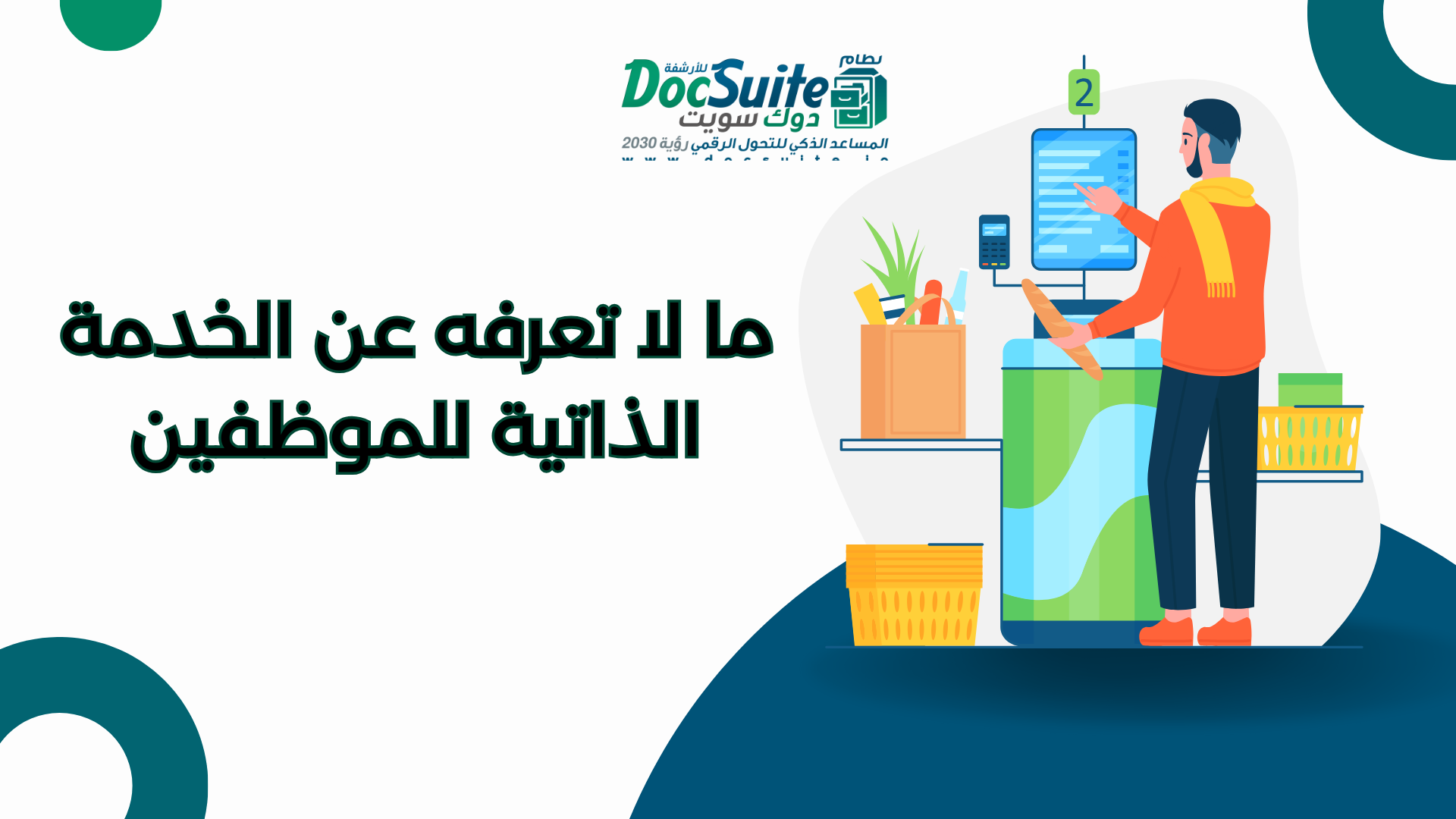Anything that enhances employee engagement, streamlines processes, and fosters organizational cohesion will positively impact a company. These outcomes are precisely what employee self-service (ESS) and digital HR transformation programs aim to achieve. ESS programs provide employees with comprehensive access to essential company information and bridge the gap between employees and HR, putting everyone in the organization on the same page.
In this article, we will cover everything you need to know about ESS programs, including what they are and how they can benefit HR, employees, and the company as a whole.
.jpg) What is Employee Self-Service (ESS)?
What is Employee Self-Service (ESS)?
Employee Self-Service (ESS) is a widely used HR technology that enables employees to perform numerous job-related functions, such as applying for reimbursements, updating personal information, and accessing company benefits information—tasks that were previously largely paper-based or managed by administration or clerical staff.
ESS is a component included in many Human Resource Information Systems (HRIS). An ESS portal allows employees to access a wide range of HR-related information and services. This not only reduces confusion but also puts the control of certain HR tasks, such as managing leave, into the hands of employees.
Typically, ESS programs enable employees to freely access and/or manage the following:
Personal employee data, such as banking information and contact details
Leave requests and schedule changes
Payroll and benefits information
Direct communication with HR through the ESS/HRIS portal
However, it is worth noting that these features vary from one program to another, and approval settings for employees to make updates may change according to the platform.
ESS is often available through the employer’s intranet or web portal. It can also be part of a larger Human Capital Management (HCM), Enterprise Resource Planning (ERP), or benefits administration software package, often delivered via SaaS platforms. ESS programs, which were once sold as standalone products, are now integrated into more comprehensive HR technology systems.
The ESS acronym is not as widely used as it was when the technology first became mainstream in the early 2000s. However, ESS features are now a fundamental function of most large HCM systems.
 Why is Employee Self-Service Important?
Why is Employee Self-Service Important?
In an increasingly competitive employee talent market, ESS technology helps create a positive work culture and retain talent by giving workers direct control over their employment information.
ESS systems optimized for mobile platforms often resemble social media interfaces and are frequently part of broader employee engagement strategies, which may include wellness programs, recognition systems, learning management systems, and company-wide social activities.
Key Features of HR Self-Service Programs
Key features of HR self-service programs include:
Payroll capabilities, such as online access to pay stubs, the ability to change tax and deduction amounts, and recording work hours.
The ability to shop for and select benefit programs, manage open enrollment, and make changes related to major life events.
The ability to make changes to retirement investment plans, such as altering employee contributions, setting up loans and withdrawals, managing accounts, and managing business trips.
Benefits of Employee Self-Service
The "big picture" benefit of an employee portal is that it unifies the team and creates a cohesive organization. This allows everyone, both HR departments and employees, to spend less time performing unnecessary administrative tasks and more time on important matters.
An employee portal program will save time for employees, who will spend less time contacting HR for information. But the benefits of ESS programs extend far beyond increased efficiency.
ESS portals also enhance employee autonomy and empowerment. Employees are individuals who do not want to be guided through every task; they want to do things themselves.
When they need to look up a policy, they can go straight to the source. When they want to schedule a leave, they can submit a request with just a few clicks. In this sense, integrating an ESS program is not just a way to simplify HR activities; it is also a way to boost employee morale.
From an HR perspective, ESS programs are a tremendous time-saver. Hours can be lost responding to low-value inquiries via phone or email. ESS portals help reduce or even eliminate this issue. Employees can access essential information about your company’s leave policies, maternity benefits, and more directly through the portal.
Low-value inquiries from employees are not just an inefficient way for HR teams to spend their time; they can also cause frustration within the workforce. Employees do not want to ask redundant questions and wait for responses from an overwhelmed HR team. These types of interactions can lead to decreased office morale, eventually requiring HR intervention.
ESS systems can save HR administrators time while giving employees more autonomy to manage their benefits and payroll configurations. They can also help make employees feel more connected to their organizations, potentially happier in their jobs, and more productive.
.png)
Challenges of Employee Self-Service
Integrating multiple ESS channels, such as intranets, web portals, wellness program apps, and retirement accounts, can be technologically challenging due to differing data formats and login procedures.
Educating employees about the capabilities of the ESS system and encouraging them to use it can also be a lengthy process.
Moreover, upgrading from legacy ESS systems to new ones can involve difficult decisions regarding vendors, including whether systems from different vendors are compatible or if a standalone ESS system should be replaced by a specialized unit from an HCM, ERP, or benefits software vendor.
ESS is how employees can access HR-related information and programs directly through the company’s intranet or web portal. ESS portals are a feature of most modern HR management systems (or HRIS) that allow employees to complete job-related tasks that HR traditionally handled, such as updating contact information, downloading pay stubs, requesting time off, and enrolling in benefits.
 The Role of DocSuite HR in Employee Self-Service
The Role of DocSuite HR in Employee Self-Service
DocSuite HR plays a vital role in company HR management, offering functions like managing employee information, recruitment and onboarding processes, performance management, and training and development. Additionally, it integrates with ESS, enabling employees to manage their personal information, request leaves, view payroll, submit complaints, and communicate directly with management. Its features include:
Employee Information Management:
DocSuite HR allows companies to fully manage employee data, such as contact details, education, previous experiences, skills, job level, salary, and other personal data.
Recruitment and Onboarding Processes:
DocSuite HR facilitates recruitment and onboarding by managing job vacancies, receiving applications, scheduling interviews, and presenting offers to suitable candidates.
.png) Performance Management:
Performance Management:
The system helps track and evaluate employee performance over specified periods, provide feedback, set goals, and offer necessary training to develop their skills.
Training and Development:
DocSuite HR aids in identifying training needs for employees, organizing and tracking training programs to enhance their proficiency and skills.
Employee Self-Service:
ESS enables employees to access their personal information, manage their data, request leaves, communicate with management, and view important documents like payslips and certificates.
Facilitated Communication:
The system simplifies communication between HR and employees, improving interaction and effectively resolving issues promptly.
Increased Efficiency:
By integrating DocSuite HR with ESS, administrative burdens can be reduced, HR processes accelerated, increasing work efficiency and focusing efforts on core strategic activities.
There are many compelling reasons why numerous HR teams are turning to ESS portals, people management programs, HCM programs, HR management programs, and HRIS programs. It’s not just about fewer emails and phone calls asking the same question repeatedly. Convincing management to work with HR solutions can completely reshape internal communications and directly impact the employee experience. In short, ESS programs help you take better care of your employees.
